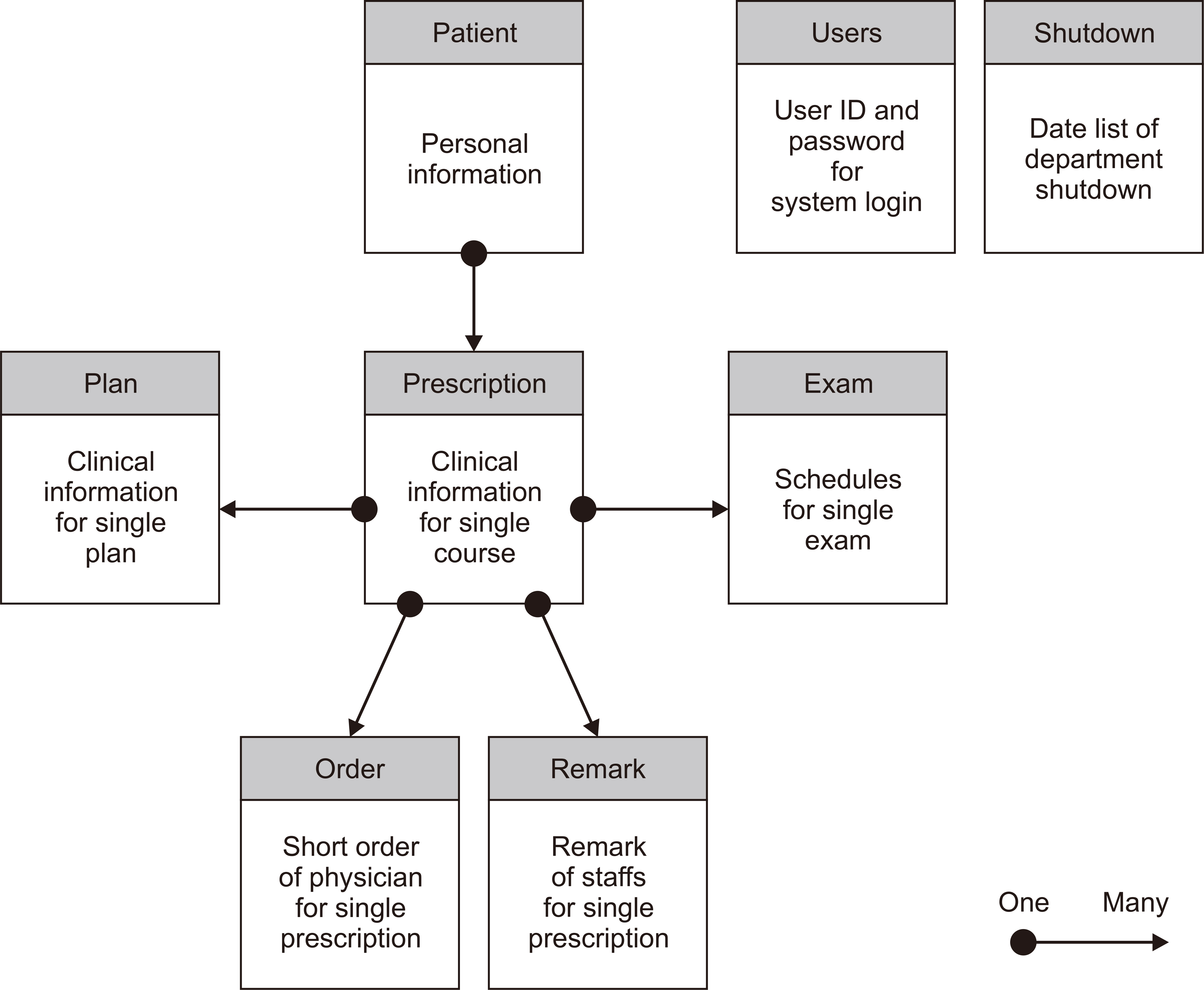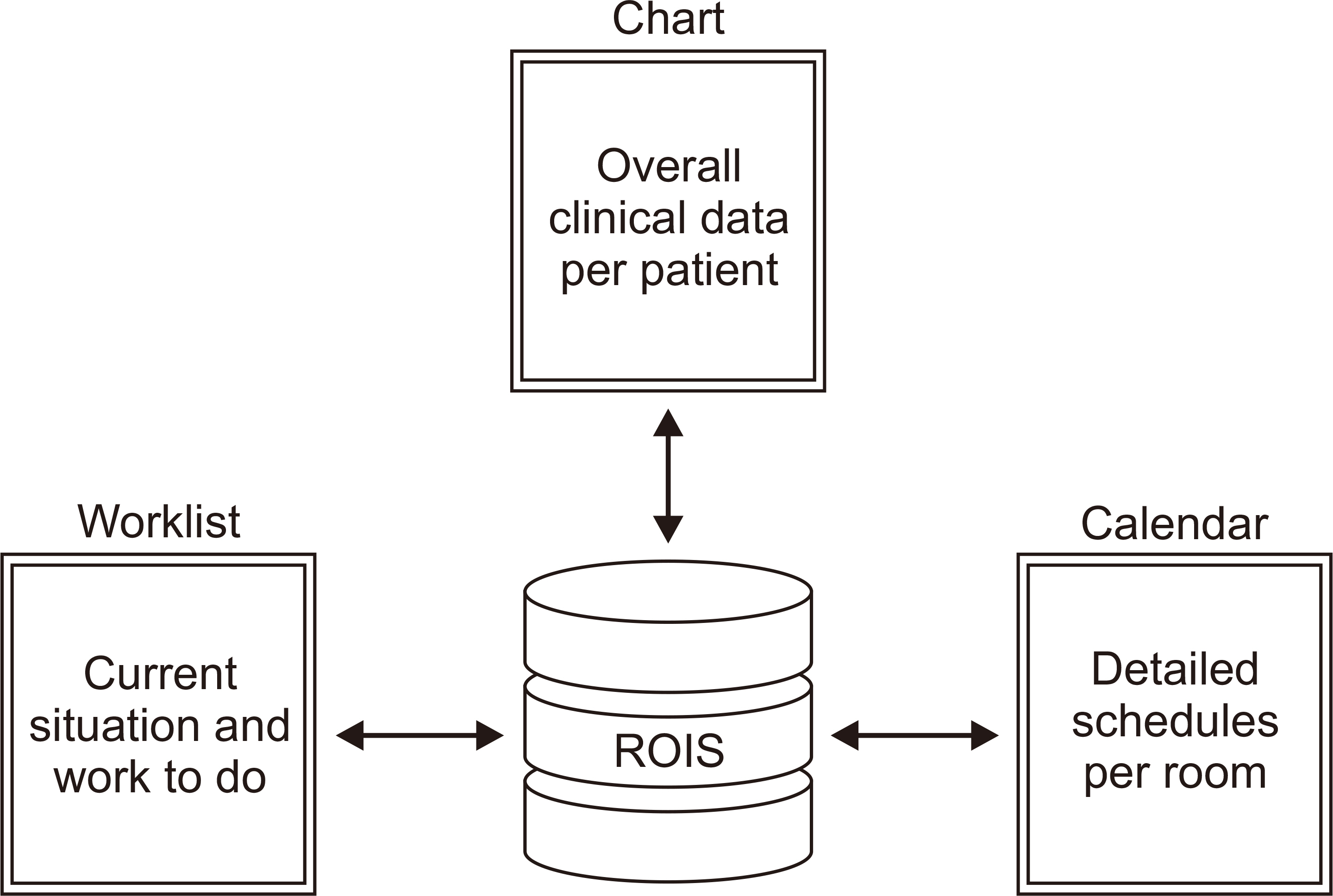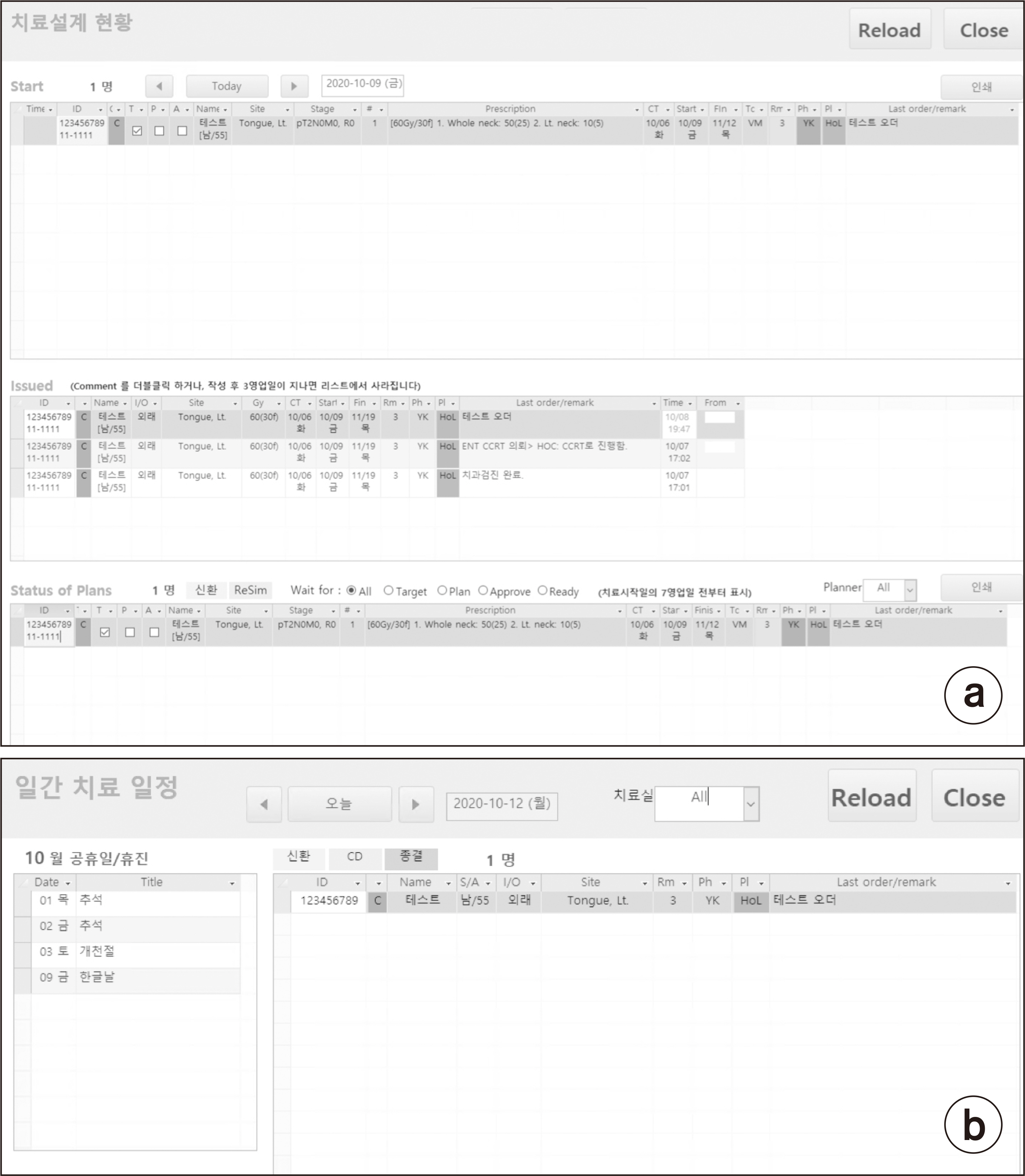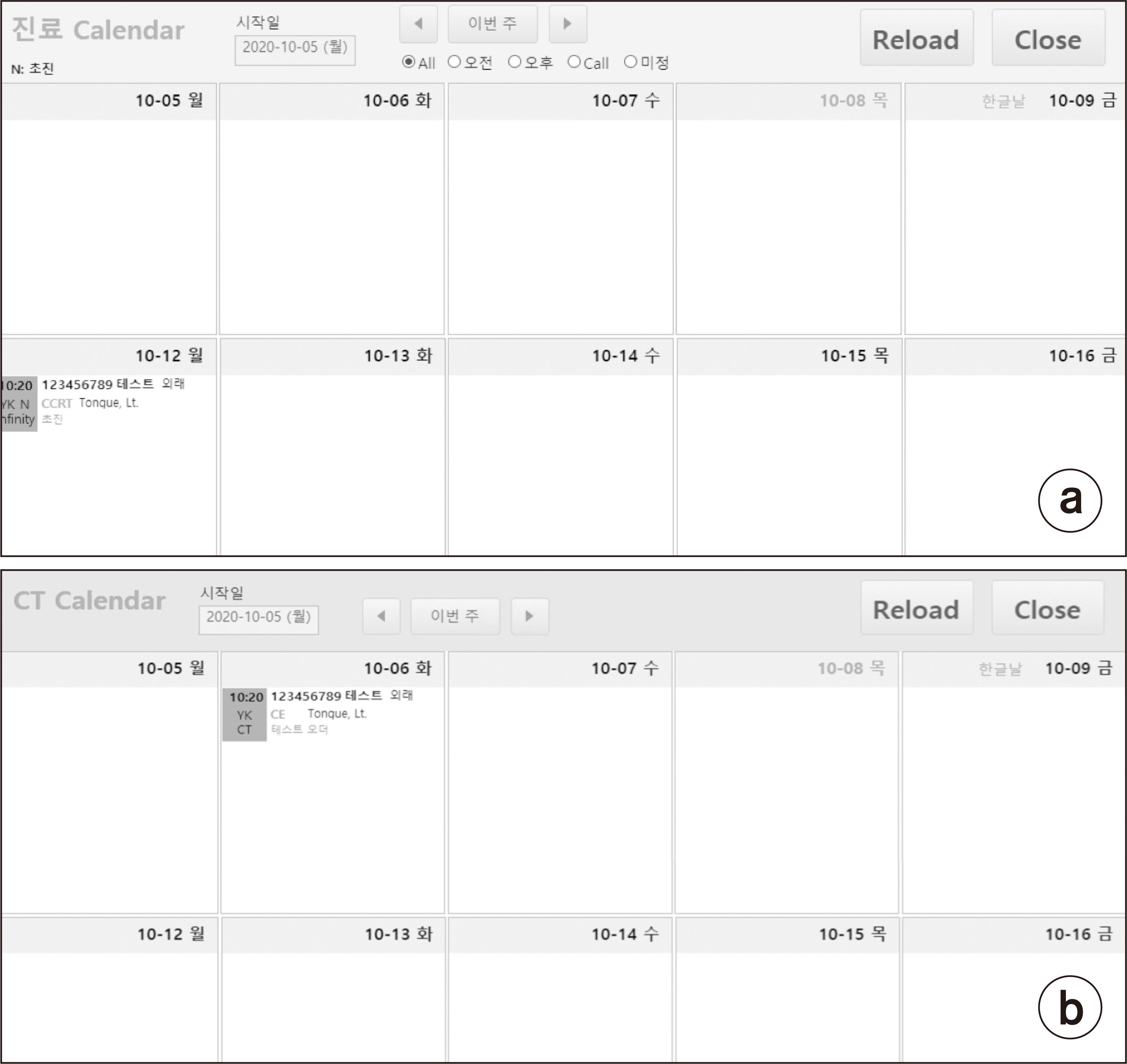Prog Med Phys.
2020 Dec;31(4):172-178. 10.14316/pmp.2020.31.4.172.
Structure of an Oncology Information System Based on a Cost-Effective Relational Database for Small Departments of Radiation Oncology
- Affiliations
-
- 1Department of Radiation Oncology and Research Institute for Convergence of Biomedical Science and Technology, Pusan National University Yangsa, Korean Hospital
- 2Department of Radiation Oncology, Pusan National University School of Medicine, Yangsan, Korea
- 3Department of Radiation Oncology, Pusan National University Hospital, Busan, Korea
- KMID: 2510478
- DOI: http://doi.org/10.14316/pmp.2020.31.4.172
Abstract
- Purpose
Radiation oncology information systems (ROIS) have evolved toward connecting and integrating information between radiation treatment procedures. ROIS can play an important role in utilizing modern radiotherapy techniques that have high complexity and require a large amount of information.
Methods
Using AccessTM software, we have developed a relational database that is highly optimized for a radiotherapeutic workflow.
Results
The prescription table was chosen as the core table to which the other tables were connected, and three types of forms-charts, worklists, and calendars- were suggested. A fast and reliable channel for delivering orders and remarks according to changes in the situation was also designed.
Conclusions
We expect our ROIS design to inspire those who need to develop and manage an individual ROIS suitable for their radiation oncology departments at a low cost.
Figure
Reference
-
References
1. Rosenbloom ME, Killick LJ, Bentley RE. 1977; Verification and recording of radiotherapy treatments using a small computer. Br J Radiol. 50:637–644. DOI: 10.1259/0007-1285-50-597-637. PMID: 901975.
Article2. Fredrickson DH, Karzmark CJ, Rust DC, Tuschman M. 1979; Experience with computer monitoring, verification and record keeping in radiotherapy procedures using a Clinac-4. Int J Radiat Oncol Biol Phys. 5:415–418. DOI: 10.1016/0360-3016(79)91225-2. PMID: 110748.
Article3. Morrey D, Smith CW, Belcher RA, Harding T, Sutherland WH. 1982; A microcomputer system for prescription, calculation, verification and recording of radiotherapy treatments. Br J Radiol. 55:283–288. DOI: 10.1259/0007-1285-55-652-283. PMID: 7066639.
Article4. Fong de Los Santos LE, Herman MG. 2012; Radiation oncology information systems and clinical practice compatibility: workflow evaluation and comprehensive assessment. Pract Radiat Oncol. 2:e155–e164. DOI: 10.1016/j.prro.2012.02.002. PMID: 24674179.
Article5. Han Y, Huh SJ, Ju SG, Ahn YC, Lim DH, Lee JE, et al. 2005; Impact of an electronic chart on the staff workload in a radiation oncology department. Jpn J Clin Oncol. 35:470–474. DOI: 10.1093/jjco/hyi129. PMID: 16024532.
Article6. Codd EF. 1970; A relational model of data for large shared data banks. Commun ACM. 13:377–387. PMID: 9617087.
Article7. Lim S, Kim K, Ahn S, Lee SH, Lee R, Cho S. 2018; Database for patient information management in radiation oncology department. Prog Med Phys. 29:23–28.
Article
- Full Text Links
- Actions
-
Cited
- CITED
-
- Close
- Share
- Similar articles
-
- Database for Patient Information Management in Radiation Oncology Department
- A XML-based Model for Integration of Individual Health Information
- Computerzation of Radiation Oncology Practice Using Order-Communicating System
- Experimental Computer-Based Management System of Patients in Radiation Oncology
- A Web-based 'Patterns of Care Study' System for Clinical Radiation Oncology in Korea: Development, Launching, and Characteristics







